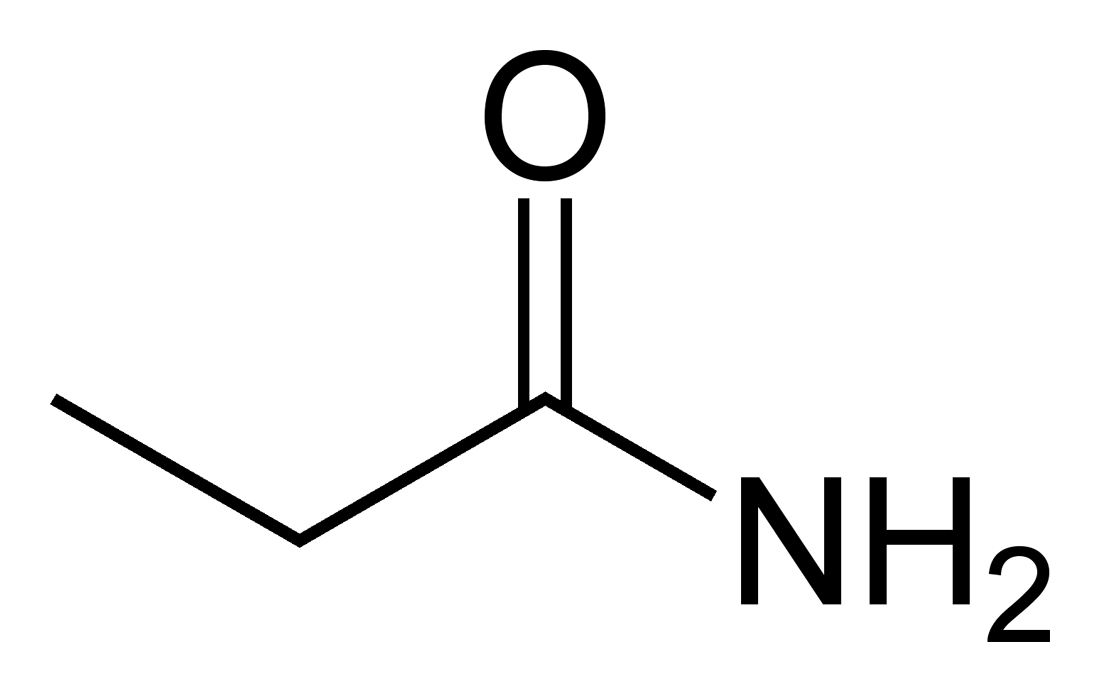Question
Question: Give the structure of Propanamide....
Give the structure of Propanamide.
Solution
The chemical formula for propanamide is CH3CH2C=O(NH2). That is propanoic acid's amide. A mono-substituted amide is this organic compound. Amide-group organic compounds can react in a variety of organic processes to produce other useful compounds for synthesis. The formal condensation of propionic acid with ammonia yields propanamide, a monocarboxylic acid amide. It's a main fatty amide and a monocarboxylic acid amide.
Complete answer: The chemical formula for propanamide is CH3CH2C=O(NH2).That is propanoic acid's amide. A mono-substituted amide is this organic compound. Amide-group organic compounds can react in a variety of organic processes to produce other useful compounds for synthesis. The formal condensation of propionic acid with ammonia yields propanamide, a monocarboxylic acid amide. It's a main fatty amide and a monocarboxylic acid amide.
The condensation reaction between urea and propanoic acid will produce propanamide.
(NH2)2CO+2CH3CH2COOH→CH3CH2CO(NH2)+H2O+CO2
Structure of Propanamide =

The organic compound urea, also known as carbamide, has the chemical formula CO(NH2)2.Two −NH2 groups are united by a carbonyl functional group in this amide. Urea is the primary nitrogen-containing agent in mammalian urine and plays a vital function in the metabolism of nitrogen-containing compounds by animals.
Propionic acid is a carboxylic acid that occurs naturally and has the chemical formula
CH3CH2COOH. It's a substance with a pungent, irritating odour that's similar to body odour.
The adsorption isotherms of acetamide and propionamide on multi-wall carbon nanotubes were determined using propionamide as an adsorbent. It was used in a reliable screening procedure to investigate biotransformations involving (+)-γ-lactamase.
Note:
The adsorption isotherms of acetamide and propionamide on multi-wall carbon nanotubes were determined using propionamide as an adsorbent. It was used in a reliable screening procedure to investigate biotransformations involving (+)-γ-lactamase.
